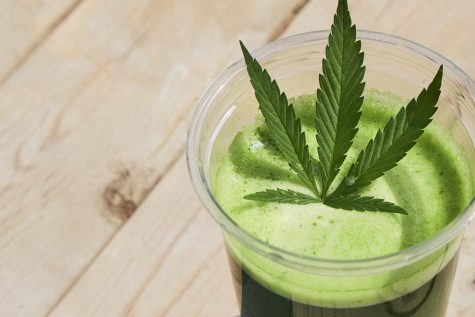Cannabis as an anti-inflammatory: Here’s what researchers have discovered
Despite a lack of studies and trials on humans, the existing research is promising
Cannabis has been cropping up on medicine shelves for several Centuries, with the plant being favored by global cultures as a natural method of treatment for inflammation.
Chronic inflammation is closely associated with a wide range of medical ailments and conditions, including – but not limited to – heart disease, obesity, stroke, autoimmune disorders and cancer.
Not so long ago, scientists discovered the role that cannabinoids play in regulating the immune system. Nowadays, more people are turning to the plant as a method of treatment for inflammation, due to its influence on the endocannabinoid system, A.K.A. the “ECS”.
This complex network is found inside both human and animal bodies and it is responsible for regulating homeostasis. Sprinkled around the ECS are CB1 and CB2 receptors. Cannabinoids like CBD (cannabidiol) and THC (tetrahydrocannabinol) bind with these receptors to suppress inflammatory responses.
Studies indicate promise in using cannabis as a treatment for inflammation
Various studies have exposed the potential of using cannabinoids to relieve inflammation, including one titled, “The Anti-Inflammatory Properties of Terpenoids from Cannabis.”
Terpenoids, or “terpenes” as they are most commonly known, are the aromatic compounds responsible for giving plants such as cannabis their alluring scent and flavor. Interestingly, terpenes do more than simply ooze fragrance. Based on studies exploring cannabis’ influence on inflammation, the various Cannabis chemotypes put under the microscope exhibited distinct terpenoid compositions.
According to the scientists, depending on their unique composition, terpene-rich essential oils demonstrate anti-inflammatory and antinociceptive activities in vitro and in vivo. However, no essential oils exerted as much of an anti-inflammatory effect as purified CBD.
Based on the findings of an article published last year in Medical News Today, the non-psychoactive cannabinoid CBD has exhibited anti-inflammatory and pain-relieving effects when used in animal studies. \
Anti-inflammatory effects are produced when the cannabinoid reacts with receptors in the brain and immune system. These receptors form part of the ECS and have been known to trigger not only anti-inflammatory activity but also, anti-anxiety, analgesic and anti-psychotic activity.
Now, let’s move on to flavonoids.
These chemical compounds are found in a wide variety of plants, including cannabis; cannflavine A, cannflavine B, cannflavine C, vitexin, isovitexin, apigenin, kaempferol, quercetin, luteolin and orientin are the types of flavonoids most commonly found in cannabis.
Flavonoids work by restricting the prostaglandins’ inflammatory pathway and when combined with various terpenoids, the chemicals may work synergistically to produce amplified therapeutic effects.
Lack of clinical trials and human studies into cannabis’ anti-inflammatory effects
Despite a lack of studies and trials on humans, the existing research is promising. Through exploring the connection between oxidative stress and inflammation in the genesis of human diseases, scientists can unlock the potential role of using CBD for this purpose.
“CBD would seem to be a promising starting point for further drug development given its antioxidant (although relatively modest) and anti-inflammatory actions on immune cells,” said a professor at the University of Mississippi Medical Center, George W. Booz.
His words came after a report was published in the journal Free Radical Biology and Medicine back in 2011. Although promising, the emerging smorgasbord of scientific evidence into cannabis’ anti-inflammatory effects lacks substance in regards to treating humans. If the plant is legalized at a governmental level in the U.S., restrictions on research will eventually be lifted.








